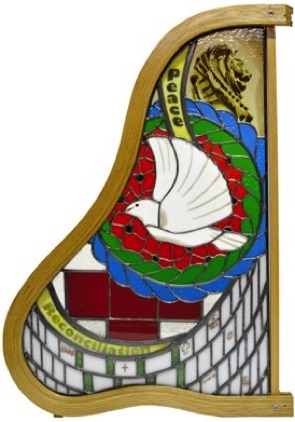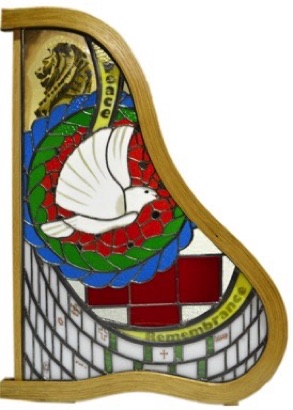Peace Quadrant


This quadrant reflects Remembrance and Reconciliation and a wish for Peace amongst all nations
- Red Cross
- Founded by a Swiss man, Henry Dunant in 1863 to care for people caught up in conflict.
A national relief society made up of volunteers trained in peace time to provide neutral and impartial help to relieve suffering in times of war. The British Red Cross was formed in 1870, initially called ‘The British National Society for Aid to the Sick and Wounded in War.
The charity still does stirling work helping those injured in conflict and disaster.
- Dove
- Universal symbol of peace
The use of a dove and olive branch as a symbol of peace originated with the early Christians featuring prominently in the story and image of Noah’s Ark.
- Headstones
- These represent the graves of allied service men and women. Working with The Red Cross in France and Flanders in September 1914, Fabian Ware went on to create The Graves Registration Commission in 1915. On 25 May 1917 this became The Imperial War Graves Commission, and in 1960 the Commonwealth War Graves Commission.
They honour some 1.7 million men and women of the Commonwealth Forces, maintaining cemeteries and memorials in 23,000 locations in over 23 countries worldwide.
These headstones depict some of the different religions they cover.
- The Lions
- The Belgian Lion, like the British Lion is a symbol of national pride.
A pair of stone lions dating back to 1822 stood at the old Menin Gate prior to WW1. At the War Memorial in Ypres a cast lion stands guard as a soldier is carried heavenwards.
Atop the Menin Gate a ‘British’ Lion rests on guard, whilst on the railings fine bronze lions sit steadfast - this stained glass shows the head of one of them.